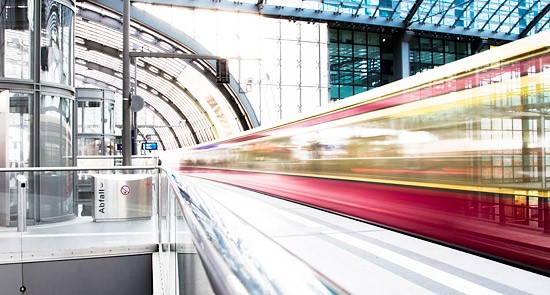
Now for some policy.
This week the Greens issued an independent report (yes, one of those independent reports) on the myriad benefits of a high-speed rail network, which they claimed totalled $48 billion.
The next stage of the government’s own scoping study of high-speed rail is due by the end of the year. It will look at the financial viability of a network, after having looked at its costs in August last year. The Greens’ report appears to be an effort to pre-empt that report, which may well conclude high-speed rail is only viable on one corridor, Newcastle to Sydney.
The report is by former Deloitte’s partner Naomi Edwards, who has “many published papers on the impacts of High-Speed Rail”. There are two basic problems with the report. One is the comparison of the benefits of HSR with the costs:
“This report has identified some $48 billion of benefits from HSR, including direct user benefits and also externalities to society. The Phase 1 Report into high speed rail (HSR), published by the Australian Government in 2011, quantified the likely costs to build a HSR on Australia’s east coast, at about $80 billion.”
So, $48 billion versus $80 billion? Not quite.
The actual cost estimate of the Phase 1 Report –- which indeed Edwards’s report acknowledges — is a range of $61 billion to $108 billion. That is, the least-risk cost estimate is $108 billion. Problem is, as I explained in August last year, that’s not the whole cost. There’s an extra $1.7 billion cost for rolling stock — chicken feed in the scheme of things — and $1.1 billion per annum in operating costs. Over the 20 of the Phase 1 study, the minimum cost including operating costs would be $83 billion and the maximum $129 billion. Plus, according to the report, there would another 10-15% management costs, taking the cost to $90 billion to $140 billion at least.
And yes, I said 20 years: for reasons unclear, the Greens’ report uses 30 years to calculate the benefits, rather than the 20 years used in the first report. So, we have to add another 10 years’ worth of operating costs.
So the real, apples with apples comparison of costs and benefits is $48 billion versus between $100 billion and $150 billion. Doesn’t sound so flash does it?
Edwards — and this isn’t her fault — also relies on the Phase 1 study for her patronage estimates, which form the basis of the calculation of the benefits. The problem is, the Phase 1 study makes a crucial erroneous assumption in its estimate of how many people will use a HSR service: it assumed that airlines would not respond in any way to competition from a new mode on their routes. That is, Qantas or Virgin would not cut their prices or improve their services (to retain business travellers) in the face of a huge threat to their most lucrative east-coast routes.
That was always a key problem with the Phase 1 study and Edwards has had to rely on the same flawed assumption in calculating things like the reduced cost of road accidents, less pollution, congestion and greenhouse emissions.
The $48 billion figure is therefore an overestimate of the benefits.
This isn’t necessarily a massive problem: as Edwards’s report notes, much of the patronage for HSR will be regional. About a third of the patronage won’t come from people travelling from Melbourne to Sydney or Brisbane, but between regional centres, and it’s the reduction in car travel by these people, not air travel, that generates a lot of the benefits — reduced accident, pollution and congestion costs. No, there’s not a lot of congestion on regional roads but we as a nation generate so many billion passenger kilometres every year that even a negligible reduction in travel times generates huge benefits when you calculate a few seconds or minutes less time across several billion passenger-kilometres times an average Value of Time –it’s just that the benefits are meaningless on an individual level.
There’s another basic problem with the Phase 1 study that feeds through into Edwards’s. That study assumes that no attempt will be made to recoup the capital costs of building the network: the figures discussed above, minus operating costs, will be regarded as sunk (as REM said “I jump on a high speed train/I’ll never look back again”).
In this case they have to be: the operating costs of the network will be expensive enough; if you add charges to cover the capital cost of nearly $100 billion over 30 years, the train tickets will be so expensive no one will ever use it. Compare and contrast the NBN: not merely is the NBN expected to cover its capital costs, but it is expected to generate a return of around 7%, sufficient that eventually it will be sold.
Then again, we know there are entire industries that will develop in coming decades that don’t even exist yet that will rely on the NBN. There are no as-yet-undreamt industries that will spring up to use HSR.
The report also perpetuates the absurd myth that Canberra is a viable second airport for Sydney, conjuring the prospect of the country’s premier city advertising itself internationally with the appeal that you can get off your 12 or 14 hour flight in a different part of the country and then take another 90 minutes to get on a train to the city before heading to your accommodation.
The sad maths of HSR, the maths that its advocates can never overcome no matter how many reports they produce, is that Australia does not have the European or Japan-sized population to geography ratio to sustain such a monumentally expensive service. Only Newcastle-Sydney, where commuter traffic can generate significant regular patronage, could be viable.








Hear, hear!
I love the thought of high speed rail, but studies I have come across, dating back to the 1960’s, invariably indicate that transport purposes alone won’t justify the capital expenditure. The projects only become commercially viable if profits from land rezoning along the corridor (for instance) are diverted to the proponents, and the social costs, eg due to a blo_dy big corridor slicing across the landscape, are socialised.
Somewhat akin to Junior Packer’s proposed plans for Barangaroo. “Give me something of value which currently belongs not to you or to me, but to the community and exempt me from bothersome laws and approval processes and I will give you back little bits of it for public purposes while I make a motza out of an oversized, insensitive development.”
Yep, business as usual.
How about Geelong-Melbourne? Murray Bridge-Adelaide?
I’d like to see more investment in train services in general, since trains are much more efficient at hauling load, don’t damage the roads and don’t cause road accidents. Trucks are an inefficient, costly and high-pollution way to haul load.
I grew up with trains, but kids growing up here (Riverland SA) have never seen one, except perhaps on TV. Our rail link was ripped up quite some time ago, despite the enormous amount of traffic which clogs the Sturt Highway daily.
… And the ‘independent minded’ Bernard Keane once again follows the conventional logic that only money counts, no costs will ever change and bean counters are ALWAYS right.
In Conventional Economistland fossil fuels to fly domestically will NEVER increase in price. Despite all fossil fuels more than tripling in price in the last decade ($23 a barrel in 2000 about 90 now) and all the newer ‘alternative’ sources being more expensive still
Climate change is, of course, not taken into account and nor is the exploding population.
This is sheer foolishness, because the disruptions that climate change have already brought national accounts (and states like Queensland) is huge and growing.
The inability of the myopic bean counters to see what’s happening now, outside their windows, let alone a decade hence is truly the only reliable thing in politics.
*sigh*
Oh and 90- minutes to the centre of Sydney sounds pretty good – obviously you’ve never tried to get from Gatwick or Heathrow to central London! *wicked grin*
The Sydney-Melbourne air corridor is one of the busiest air routes in the world. Sydney airport is at capacity and there isn’t a hope in hell of a second one being built. The ONLY way to get additional capacity on the route (and it’s going to be needed as both cities grow) is via another transport medium. Even if a second Sydney airport could be built, how much would it cost, how would that compare with a high-speed rail link and what cost-benefit criteria would be used?
I was in Europe on holidays this year and travelled on a number of high-speed trains. On the Nuremberg-Munich ICE train I was talking to the guide on the trip (who was late ’20s and had lived in the US) about high speed rail. I said that the problem in Australia was the long distances between sectors, but he reeled off a number of routes in Germany with four-five hour travel time (forget the details) where high speed rail had nevertheless largely taken over from air.
We went on the Luxembourg-Paris TGV, currently the fastest train line in the world, and it sat on 320km/hr for over an hour. A direct link from Sydney-Melbourne, say 800km, at that speed would make it in under three hours, and get you from city centre to city centre.
Then there’s other benefits, the main one being its ability to use various and non-fossil fuels – the use of algae-produced fuel for aircraft is in its infancy. It provides long-term infrastructure flexibility and strategic redundancy.
As for Sydney-Newcastle, it’s only 100 km and I can’t see the time saving being worth the expenditure as a stand-alone project. It would primarily make sense as a low-risk technology demonstrator for a longer link. Then link to Melbourne, with initial destination Canberra, and head north from Sydney ultimately to Brisbane, the big growth city.
Moving a large part of Sydney-Melbourne traffic off aircraft and ultimately much of Sydney-Brisbane would also prolong the life of Sydney airport.
The world is going high-speed rail, except for the Anglosphere.
Transport expert Paul Mee’s book puts some holes in the argument that Australia is not dense enough for high frequency transport, admittedly its mostly focussed on cities but given the population densities of the eastern seaboard, and as the previous contributor writes very busy nature of the melbourne to sydney air corridor one would think high speed rail in the south east of Oz, from basically brisbane across to Adelaide in some format picking up Sydney melbourne and canberra, would make senes. Especially when you factor in greenhouse emissions etc. Id be interested to hear what Paul Mees thinks though I recall him not seeing high speed rail as a priority when compared to intra city public transport needs.